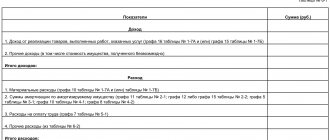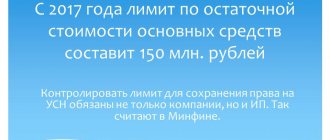UTII, USN, OSNO, PSN, Unified Agricultural Tax: for some this is a meaningless set of letters, but for an entrepreneur it is a direct indication of what his tax burden will be. To learn how you can compare taxation systems in order to legally reduce payments to the budget when doing business, read the article “Taxation systems: how to make the right choice?” And for those who still have questions or those who want to get advice from a professional, we can offer free tax advice from 1C specialists:
Get a free consultation
Supporting agricultural producers is one of the priorities of domestic economic policy in many countries of the world. Russia is no exception. The Unified Agricultural Tax, that is, the single agricultural tax, is one of the elements of such a policy. Agricultural producers and fishing industries have the right to apply this preferential treatment.
A significant sector of the processing industry, which can directly (due to the volume and prices of purchases) stimulate the efficiency of agricultural producers, does not have the right to apply the unified agricultural tax. And agricultural producers themselves are subject to a strict restriction - at least 70% of their total income must come from the sale of agricultural products produced by them. In such a situation, many entrepreneurs working in agriculture choose a similar preferential regime - the simplified tax system Income minus expenses, which does not impose such restrictions.
Since 2020, organizations and individual entrepreneurs that provide services to agricultural producers have been added to the list of those who have the right to apply the unified agricultural tax, and the services must be provided specifically in the field of crop and livestock production. This could be preparing fields, harvesting crops, grazing livestock, etc. A complete list of such services is contained in Federal Law No. 216 dated June 23, 2016.
If you find the simplified system profitable and convenient for yourself, then you can prepare an application for switching to the simplified tax system in our service absolutely free of charge:
Create an application for the simplified tax system for free
What are the benefits of using unified agricultural tax?
If we talk about the tax burden, then until 2020 the Unified Agricultural Tax was superior to both the OSNO and the simplified tax system. Let's compare the tax base and tax rate of systems whose object of taxation is received income (we remind you that for UTII neither income nor expenses are taken into account):
| Element of the tax system | Unified agricultural tax | BASIC | USN Income | USN Income minus expenses |
| The tax base | Monetary value of income reduced by expenses | Monetary expression of profit, that is, the difference between income and expenses | Monetary expression of income | Monetary value of income reduced by expenses |
| Tax rate | 6% | 20% (in general) | 6% | From 5% to 15% (depending on the size of the differentiated rate accepted in the region) |
As you can see, although the tax rate for the Unified Agricultural Tax and the simplified tax system for Income is the same, the tax base for the simplified tax system for Income is larger, since it does not take into account expenses incurred, which means that the tax payable will be higher.
It was possible to compare the Unified Agricultural Tax in terms of the tax burden only with the simplified tax system Income minus expenses (subject to the minimum possible rate of 5%, which is not applied in all regions). However, since 2019, agricultural tax payers, as well as those who work for OSNO, began to pay VAT. You can be exempt from paying this tax if the agricultural producer’s income in 2020 did not exceed 90 million rubles.
Filling out the 2nd section of the accounting book
In this section you need to show the following consumable information:
- Funds spent on fixed assets (their construction, creation, purchase, production), investments in their modernization. Only data on fixed assets involved in business activities is shown;
- Funds spent on intangible assets (creation, purchase) used in the activities of the individual entrepreneur.
Information is provided as of the last day of the period recognized as reporting and tax, for each object separately. Information for filling out the tabular part of the second section is taken from the technical passports of non-current assets. Filling out the table columns:
| Column number | Information to be filled in |
| 1 | Record number |
| 2 | Object name |
| 3 | The date of full payment for the object is indicated on the basis of the payment paper (order, receipt for the PKO) |
| 4 | The date of transfer of papers to the government agency for the registration procedure is filled out only in relation to those assets for which there is a need to register property rights in the state order |
| 5 | Date when the asset is capitalized - accepted for accounting or put into operation |
| 6 | The cost includes all expenses for an incoming asset purchased or created during work at the Unified Agricultural Tax. The entry is made in the period in which one of the following events occurred last:
If data on reconstruction or modernization of an existing asset is shown, then the same procedure should be followed in determining the date for reflecting cost data. |
| 7 | The number of years that the asset will be used for its intended purpose. The column is filled in only for those assets that were registered before work at the Unified Agricultural Tax. |
| 8 | The residual value of assets received before the unified agricultural tax is determined according to the rules provided for by the Tax Code of the Russian Federation, depending on which regime the individual entrepreneur switched to the unified agricultural tax, the corresponding article of the Tax Code of the Russian Federation is applied:
The date of recording the value must fall in the period in which one of the following events last occurred:
|
| 9 | The number of six months during which the capitalized and paid asset was used. |
| 10 | The share of cost that is included in expenses for the tax period. To determine this value, the rules provided for in paragraphs are taken. 2 clause 4 art. 346.5. |
| 11 | The share of the cost of intangible assets or fixed assets that is included in expenses in half a year is determined by dividing the share of cost included in expenses for the year by the number of half-years specified in column 9. |
| 12 | Share of expenses included in the base for each half-year: Indicator gr. 6 or 8 * indicator gr. 11 / 100 |
| 13 | Share of expenses included in the base for the year: Indicator gr.6 or 7 * indicator gr.9 * indicator gr.11 / 100 |
| 14 | The amount of expenses included in the database for past years (taken from column 13 of the book for past years). The column is not filled in if the asset was received during the period of work at the Unified Agricultural Tax. |
| 15 | The balance of expenses that will be written off in future periods (column 8 – column 13 – column 14). The column is not filled in if the asset was received during the period of work at the Unified Agricultural Tax. |
| 16 | The date on which the asset was deregistered due to write-off or disposal. |
The table results are shown for each half-year and year in columns 6, 8, 12-15.
Who can be a payer of the Unified Agricultural Tax
A full description of taxpayers entitled to the Unified Agricultural Tax is given in Art. 346.2. Tax Code of the Russian Federation. They can only be:
- Organizations and individual entrepreneurs, as well as agricultural consumer cooperatives that produce, process and sell agricultural products. This condition must be considered comprehensively, that is, all these requirements must be taken into account. It’s just that processors and sellers of agricultural products do not have the right to the Unified Agricultural Tax.
- City-forming and village-forming Russian fishery organizations, provided that the number of workers in them, taking into account family members living with them, is at least 50% of the population of this locality. This also includes fishing cooperatives (collective farms). In this case, fishing must be carried out on fishing fleet vessels owned by right of ownership or on the basis of charter agreements.
- Organizations and individual entrepreneurs that provide services to agricultural producers in the field of crop and livestock production.
Who are agricultural producers?
- enterprises and individual entrepreneurs that produce, process and sell agricultural products. There is one important condition here: the share of income from the sale of such products must be at least 70% of the income from the sale of all goods and services;
- agricultural consumer cooperatives whose share of income from the sale of agricultural products of their own production is at least 70% of income from the sale of all goods and services;
- fishing organizations and entrepreneurs that meet a number of conditions (the share of income from the sale of catch is at least 70% of the total income, fishing vessels belong to them by right of ownership or under charter agreements, etc.)
- organizations and individual entrepreneurs that provide agricultural producers with services related to auxiliary activities in the field of crop production and post-harvest processing of agricultural products: field preparation, sowing, driving and grazing livestock, etc. The share of income from the sale of the listed services must be at least 70% of the income from the sale of all goods and services
Restrictions for Unified Agricultural Tax
Additional restrictions for using this mode look like this:
- Manufacturers of excisable goods (alcohol, tobacco, etc.), as well as those involved in the gambling business, cannot work for the Unified Agricultural Tax.
- In order to be able to switch (for already operating business entities) or retain the right to unified agricultural tax, the taxpayer must fulfill the condition that the share of income from the sale of agricultural products or fishing catch is at least 70% of his total income.
- If the average annual number of fishery organizations and individual entrepreneurs using the Unified Agricultural Tax does not exceed 300 people. There is no such requirement for agricultural organizations.
- There are no restrictions on the amount of income received, provided that the requirement for a share of income of at least 70% is met.
Cost accounting for unified agricultural tax
Due to the fact that the tax base for this tax is calculated taking into account the costs incurred by the organization, Art. 346 of the Tax Code of the Russian Federation establishes a strict list of regulated costs that are taken into account when calculating tax. The list is closed; as a result, the organization must determine the legality of each type of cost incurred. In addition, all expenses of companies and individual entrepreneurs applying the payment of the unified agricultural tax must be economically justified and documented. This requirement is specified in Art. 252 of the Tax Code of the Russian Federation.
Modernization of fixed assets accounting and tax accounting
Accounting for Russian agricultural companies in most cases does not cause difficulties for accounting employees. As a result, the Unified Agricultural Tax payment regime is successfully used by representatives of the agricultural sector.
Similar articles
- Unified agricultural tax for peasant farms
- What are the advantages of the Unified Agricultural Tax?
- Transition to Unified Agricultural Tax
- Tax base of the Unified Agricultural Tax
- The reporting period according to the Unified Agricultural Tax is recognized
Elements of the Unified Agricultural Tax system
The Unified Agricultural Tax can be called a taxation system that is easy to understand. What do you need to know about this system?
- The tax period, that is, the period of time at the end of which the amount of tax payable is calculated, is a calendar year.
- The reporting period based on the results of which the advance tax payment must be calculated and paid is six months. The declaration at the end of the reporting period is not submitted, but by July 25 an advance payment must be made based on the income received in the first half of the year.
- The object of taxation for the Unified Agricultural Tax is income reduced by the amount of expenses, and the tax base is the monetary value of such income. The rules for recognizing income and expenses for calculating agricultural tax are very similar to those that apply when calculating the tax base when calculating the simplified tax system Income minus expenses.
- The tax rate is 6%, and has no regional specifics, and local authorities cannot limit the operation of the Unified Agricultural Tax on their territory.
We draw the attention of all LLCs to the Unified Agricultural Tax - organizations can pay taxes only by non-cash transfer. This is a requirement of Art. 45 of the Tax Code of the Russian Federation, according to which the organization’s obligation to pay tax is considered fulfilled only after presentation of a payment order to the bank. The Ministry of Finance prohibits paying LLC taxes in cash. We recommend that you open a current account on favorable terms.
How to switch to Unified Agricultural Tax
The transition to paying agricultural tax is voluntary and is possible both when registering a business entity, and if an LLC or individual entrepreneur is already operating under some kind of regime. The notification is submitted to the registering tax authority in form No. 26.1-1.
- Newly registered individual entrepreneurs and legal entities must submit a notification within 30 days after registration to switch to the Unified Agricultural Tax.
- Already operating business entities can submit a notification no later than December 31 of the current year in order to switch to paying agricultural tax from the beginning of the new year. At the same time, they must indicate in the notification data on the share of income from the sale of agricultural products or fishing catch. This share must be at least 70% of total income.
Rules for maintaining a ledger of income and expenses
Entries in the book are made only if there is appropriate supporting primary documentation. If there is no document, then information about the operation is not allowed to be entered into the book.
- The obligation of the individual entrepreneur is to provide reliable and complete information, to ensure the continuity of its reflection in a special book. The correct display of the necessary indicators during the period will allow the entrepreneur to correctly calculate the base and amount of the agricultural tax.
- Organizations working for the Unified Agricultural Tax are required to keep full accounting records using accounting registers, consistently reflecting each transaction performed using double entries. If, according to the necessary criteria, an LLC can be classified as a small enterprise, then this does not eliminate the need for accounting, but accounting activities can be carried out in a simplified form. Read also the article: → “What types of activities on UTII are suitable for an LLC?”
Loss of the right or refusal to apply the unified agricultural tax
If at the end of the year it turns out that the requirements for the application of this regime have been violated (for example, the share of income from the sale of agricultural products or fishing catch is at least 70% of the total income), then the Unified Agricultural Tax payer must report this in Form No. 26.1-2. In this case, the tax for the past year will be recalculated based on the requirements of OSNO, and the arrears will have to be paid in January of the new year.
You can also refuse to apply this preferential treatment on a voluntary basis; this is reported in Form No. 26.1-3. This can be done only at the end of the tax period, that is, the calendar year, in the period from January 1 to January 15.
Finally, the fact that the Unified Agricultural Tax payer has ceased the activities of the agricultural producer must be reported within 15 days from the date of termination of such activities in Form No. 26.1-7.
Calculation of Unified Agricultural Tax
As a general rule, the tax rate under the Unified Agricultural Tax is 6 percent (clause 1 of Article 346.8 of the Tax Code of the Russian Federation). An exception to this rule is made for organizations of the Republic of Crimea and the city of Sevastopol, information about which is included in the Unified State Register of Legal Entities. For them, by decision of the regional authorities, the unified agricultural tax rate may be reduced. Moreover, in 2015–2016, down to zero.
Calculate the amount of the unified agricultural tax (the amount of the advance payment under the unified agricultural tax) using the formula:
| Unified agricultural tax (advance payment under Unified agricultural tax) | = | Income received for the year (half year) | – | Expenses incurred during the year (half year) | × | Tax rate |
If the organization received a loss during the six months (expenses exceed income), the amount of the advance payment under the Unified Agricultural Tax is recognized as zero.
The amount of the advance payment is counted towards the payment of the Unified Agricultural Tax at the end of the year (clause 3 of Article 346.9 of the Tax Code of the Russian Federation). Therefore, at the end of the tax period, the organization may have a tax amount that is not subject to additional payment, but to a reduction. For example, this is possible if the organization’s income level decreases by the end of the year, and the amount of expenses increases.
The resulting negative difference (tax to be reduced) can be:
- offset against arrears on other federal taxes;
- offset against upcoming payments for Unified Agricultural Tax or other federal taxes;
- return to the organization's bank account.
The procedure for offset (refund) of overpaid taxes is established by Article 78 of the Tax Code of the Russian Federation.
Reporting, accounting and payment of tax on unified agricultural tax
Agricultural tax payers submit one declaration per year, completed in the prescribed manner, no later than March 31 of the year following the reporting year. If the activity is terminated before the end of the tax period, then the declaration must be submitted no later than the 25th day of the month following the month of termination of the activity.
Individual entrepreneurs at the Unified Agricultural Tax maintain a special Book of Income and Expenses designed for this regime; organizations maintain only accounting registers.
If you did not manage to pay taxes or contributions on time, then in addition to the tax itself, you will also have to pay a penalty in the form of a penalty, which can be calculated using our calculator:
So that you can try outsourcing accounting without any material risks and decide whether it suits you, we, together with the 1C company, are ready to provide our users with a month of free accounting services :
Get free accounting services
Agricultural tax is paid twice a year: once in the form of an advance payment at the end of the half-year no later than July 25, and a second time at the end of the year, inclusive until March 31 of the next year, taking into account the advance payment already made.
In addition, if the agricultural tax payer has not received an exemption from paying VAT in accordance with the provisions of Article 145 of the Tax Code of the Russian Federation, then he must pay value added tax and submit the corresponding declarations.
Unified Agricultural Tax: organization of tax accounting
The use of a special regime in the form of payment of a single agricultural tax often raises questions among accountants. Our material will give answers to many of them, help to establish accounting in the organization and optimize the work of accounting workers.
Determining the accounting procedure Let's start with the fact that organizations that have switched to a special tax regime in the form of paying the unified agricultural tax must maintain full accounting records.
As for the accounting of indicators for calculating the tax base and the amount of the Unified Agricultural Tax, they are required to maintain it on the basis of accounting data. However, unlike accounting, where all the rules are regulated, no special books or strict standards have been established for tax accounting. Therefore, agricultural organizations have the right to independently develop a tax accounting system.
We are creating an accounting system










